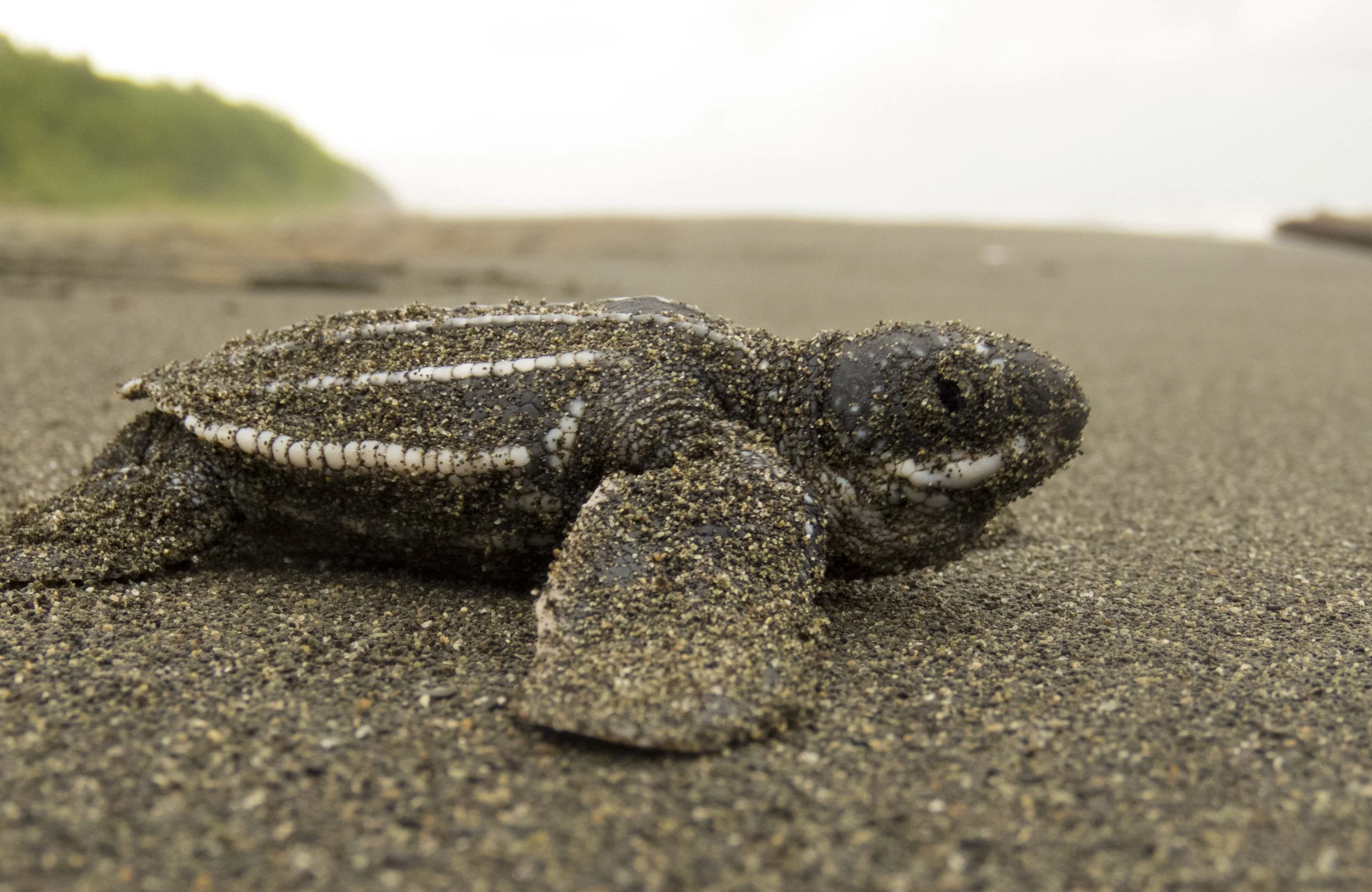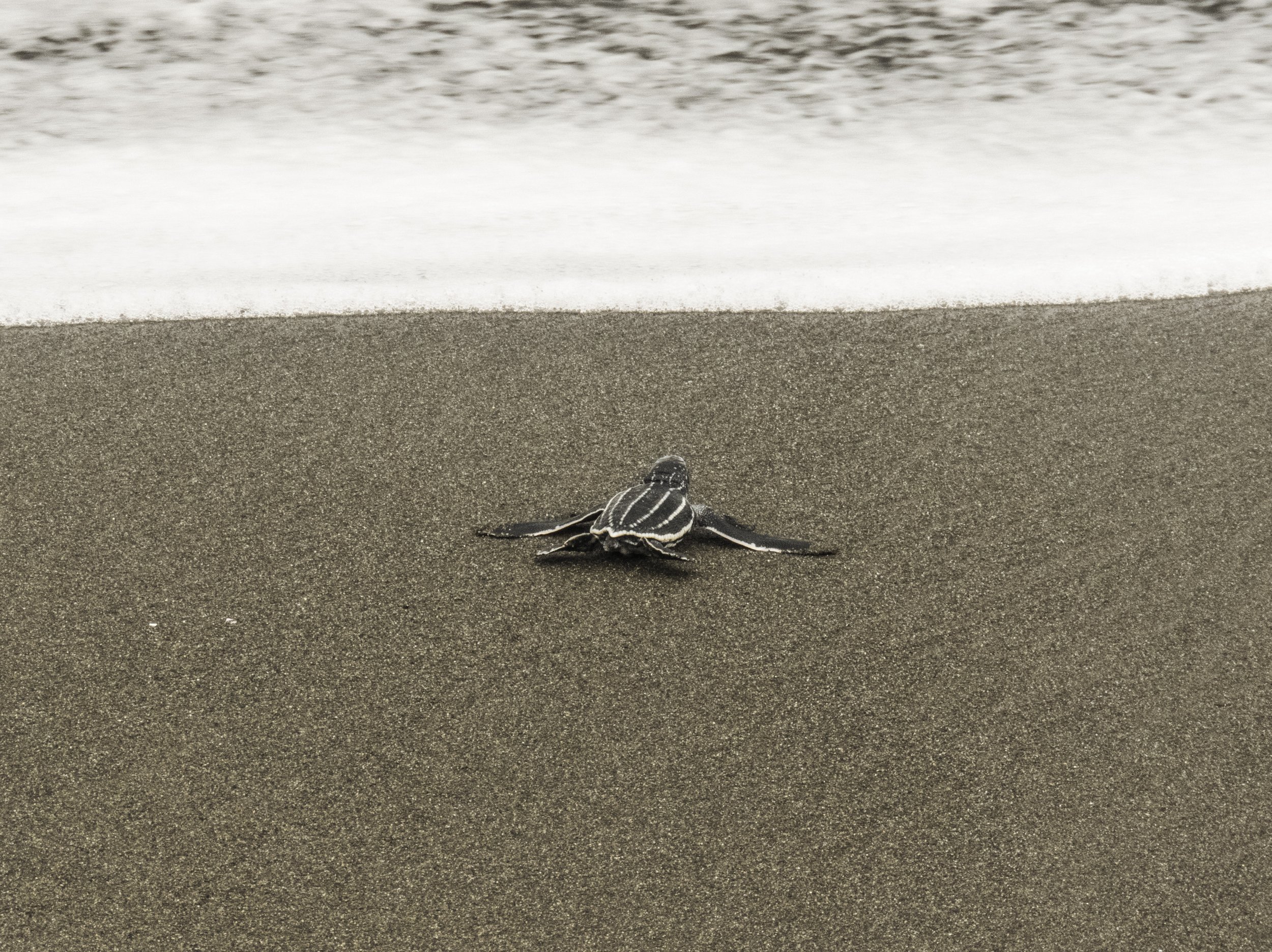Max Gotts is an undergraduate at Princeton University studying Ecology and Evolutionary Biology, alongside Astrobiology and Mathematics. He joined Upwell initially through his high school, The Nueva School, but has worked with Upwell on a number of projects since then. Last month, he attended the 40th Annual International Sea Turtle Symposium (ISTS40) where he gave a presentation on his research on sea turtle hatchling evolutionary morphology, co-written with Upwell team members Aimee Doyle, Nicole (Nicki) Barbour, and Dr. George Shillinger, as well as Upwell’s long-time partner Research Dr. Helen Bailey at University of Maryland Center for Environmental Science.
It was 2am and I was still awake. It’s not a surprise; I attend Princeton University, the college campus that never sleeps. I checked the time in Australia: 4pm, a much more reasonable time, so I logged onto the virtual “Gather” space, and entered the 40th Annual International Sea Turtle Symposium for the first time. I was immediately shocked how natural it felt. Once you customize your avatar, you are dropped into a Zelda-like 2D video game world where you navigate different stands, rooms, and other attendants using your arrow keys and keyboard shortcuts. In some of the rooms, you find “carpets” where you can find posters, uploaded as PDFs, and talk with those reading along with you. Other rooms are set up like lecture halls, with specific areas where you can stand and project your voice to the whole room to present or answer Q&A’s. What was most exciting, though, was the fact that whenever you get close to someone else’s avatar, you are given the option to share your video and audio with them. As a result, you can “run into” someone you know, or want to meet, and have an impromptu conversation with them.
This is how it came to be that, at 2am, I found myself being introduced to Professor Colin Limpus, a sea turtle legend known universally as simply “Col.” It took some technical wrangling, but eventually we got his microphone working, and I got a chance to talk to him about my interest in hatchling morphology and survival. Eventually we parted ways, and I wandered around the space, elated at how well ISTS40 was already going for me. It was then that I accidentally ran into Professor David Booth, an ecologist whose research in hatchling incubation has been fundamental for understanding the impacts of climate change on sea turtles’ prospects, and who made the research I was going to be presenting later that week possible. I have cited his various articles more times than I care to count, so it was a wholly unreal experience to meet him so randomly in the wee hours of the morning, in my pajamas, sitting in my dorm on the East Coast. After talking for a while about what we were doing at ISTS40, we parted ways, with a vow to meet again before the symposium ended.
In 2018, I worked with Nicki Barbour a PhD student at the University of Maryland and Upwell researcher in her own right, performing field work in Costa Rica to collect data for her dissertation. We spent long days on a small boat in big waves, tracking hatchlings as they swam with ferocious tenacity towards the open ocean. When I returned to the States, I began my own project with the data we had collected, advised by the Upwell team involved in the project, and one of Nicki’s advisors, Professor Helen Bailey. The project was based on the fact that sea turtle hatchlings die in droves for the first hour of touching the ocean: almost half of all juveniles get eaten or simply expire in this period of time. I aimed to determine whether this mass mortality was a form of natural selection, whether it was an “evolutionary pressure” or not. Our discovery was shocking: using computational biology, we showed that this mass mortality doesn’t appear to be an evolutionary pressure. I was attending ISTS40 to present these findings in an oral presentation.
Image by Max Gotts
During my spring break, I recorded the video that would be used for the virtual (pre-recorded) presentation. After a full weekend of writes and rewrites and an infinite number of takes videoing the presentation, I finally had enough material to cobble together an acceptable submission. Little did I know when I was recording, however, that I would be presenting in front of many of the people I cited in my slides. Before my presentation later that weekend, I met up with David Booth again. I wanted to talk to him about the environmental and genetic factors that impact hatchling morphology and locomotion, a pending question in my research that I hadn’t been able to answer looking through journals and articles. During an engaging and enlightening discussion, he confessed to me that it was an open question in sea turtle biology. He wished me good luck with my presentation, and said that he would be presenting in the same session, so he’d see me there.
The next afternoon, I was onstage, answering questions from an attentive and vastly knowledgeable audience of fellow sea turtle enthusiasts. After an exhilarating (slightly terrifying) 15 minutes, I was back on the floor, running into colleagues and introducing myself, and accidentally crashing private conversations (social cues don’t translate well with 32-bit video game characters). Only a few hours later, the symposium ended with awards and thank-yous, leaving me yearning for ISTS41.



